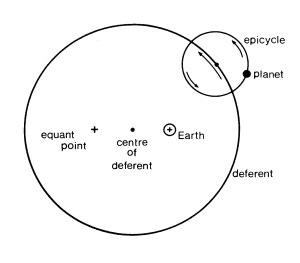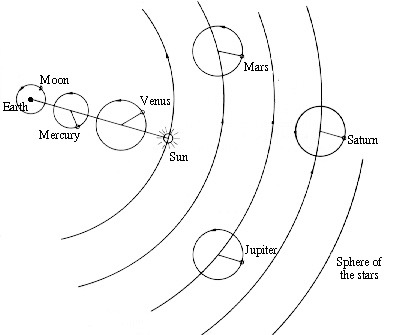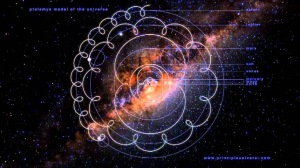Maggie: If I remember right, today we are talking about astronomy in the Hellenistic Era.
John: Right.
Defining the Hellenistic Era
Maggie: First, can you tell me what you mean by the term Hellenistic?
John: Well, I think I can manage that. Are you familiar with Alexander the Great?
Maggie: Sure. You used to talk about him. He was one of the greatest military generals of all time. He lived to do battle. And he conquered huge sections of Asia and the Mediterranean.
John: Good memory. As a result of his conquests and the subsequent colonization, Greek culture spread throughout these regions. The Hellenistic period refers to that period of time when Greek culture, science, and philosophy influenced these regions. Scholars generally date this period starting with the death of Alexander in 323 B.C.E. and ending in 31 B.C.E. with the final conquest by Rome of the Hellenistic kingdoms. But, and this is a big but, Hellenistic astronomy extends into the second century, and includes those astronomers like Ptolemy who were greatly influenced by previous Hellenistic astronomers.
Maggie: So we are talking about the astronomy that took place approximately between 350 B.C.E. and 200 C.E.?
John: Yes, exactly right. But before we begin that discussion, I think we would benefit from reiterating a couple points that we made during our discussion of Stephen Hawking.
Maggie: Oh, those were fun conversations. What do you want to revisit here?
Re-Discussing the Notion of Scientific Changes
John: I think we should re-discuss the concept of scientific changes. What do you think about just repeating our previous conversation verbatim?
Maggie: I think that is a good idea. That was an important conversation for me.
John: Good. Here it is:
John: The first thing we need to understand is that science and scientific ideas change, a lot!
Maggie: I thought scientific ideas, like math, never changed. Once the ideas are proven, they are proven for eternity.
John: That is what most people think because that is what we are taught in high school. But it is not true.
Maggie: Weird. So how do scientific ideas change?
John: Good question. Generally speaking, there are two types of changes that happen in science.
The first type of change occurs because scientific ideas are cumulative. They build on one another. Think about it like this. A scientist comes up with an idea, such as gravity. Another scientist then takes that idea and refines it, making it more succinct. A third scientist comes along and builds on the previously refined idea, applying the idea in a new manner. And then a fourth scientist builds on that, and so on.
Maggie: I get it. Ideas build on each other. I think Hawking had that same idea also, when he said that he stood on the shoulders of giants.
John: Right. I am so glad you remember that.
Maggie: Well, you’ve quoted Hawking so much it’s hard to forget. What is the second type of change?
John: The second type is called a paradigm shift. It occurs when a scientific theory takes a large and radical shift so that a previous model or way of thinking about a subject changes or is proven wrong.
Maggie: I am going to need an example, I think.
John: And I think I have a good example. It is even in astronomy, part of our general topic.
Ptolemy was an astronomer born around A.D. 100. He came up with a model of the solar system that put the earth at its center, with all the planets circling around the earth. This is called a geocentric universe. He worked out the math so that the model was geometrically correct, calculating the future positions of the planets. The model was internally consistent and was used by scientists for close to 1,500 years. In other words, it was believed to be the true and correct model for all those years.
Then in 1543, the same year that he died (which is weirdly interesting to me), Nicolaus Copernicus published his book On the Revolutions of the Celestial Spheres. This book shook the scientific world in Europe, causing what is now known as the Copernican Revolution in astronomy. In this book, Copernicus proved that the solar system is in fact heliocentric, not geocentric. Heliocentric means that the sun is at the center, not the earth, and the planets rotate around the sun. This is what we believe to be correct today.
The Copernican Revolution is an example of a paradigm shift. Astronomy took a radical shift when the Ptolemaic system, which had been relied on by European scientists for 1,500 years, was proven to be incorrect, and western scientists began to rely upon Copernicus’ model.
Does this make sense to you?
Maggie: It makes perfect sense. So let me see if I can summarize our discussion so far. There are two ways in which science changes. The first is when an idea is refined or applied in a new way. This happens often because science is cumulative. The second is when science takes a radical shift because a scientific idea is proven wrong or is superseded by a new idea, and this is called a paradigm shift. Is that right?
John: I am always impressed with how well you can summarize our discussions. That is a real talent.
Maggie: I remember that conversation well. And it still makes perfect sense to me. But why is it important here?
John: For two reasons. First, we are going to discuss Ptolemy, whose scientific system would rule the roost until Copernicus comes along 1,500 years later. Second, Ptolemy is going to build on the Aristotle and previous Hellenistic astronomers in developing his system.
Maggie: Okay. That makes sense. But come on, “rule the roost?” You need to update your analogies.
John: I am old, so that is the best I have got. But now, on to Ptolemy.
Ptolemy
Maggie: Are we talking about an Egyptian pharaoh here?
John: No, we are not. This mistake is often made due to his name, but he was not one of the Egyptian emperors in the Ptolemaic dynasty. Just a nerdy scientist.
Maggie: Can you tell me something about him personally, before we start discussing his science?
John: Sure. He lived in the City of Alexandria, which was in Egypt. Alexandria was an academic center at that time, attracting scholars from all over the world. He worked in mathematics, geometry, geography, astronomy, and astrology. His most famous writing was in astronomy, and it is called the Almagest. It is a complex mathematical work and in it he describes the solar system. It is a really cool piece of work.
Maggie: Astrology?
John: I know, I know. How could he be involved in astrology? But you have to remember that religion and magic still played a strong role in the cultures of that time. So people were not as predisposed to dismiss or ignore such ideas as they are today. And who knows, maybe they were the better for that.
Maggie: I agree. Maybe we dismiss things too quickly today, simply out of prejudice or arrogance.
John: My thought exactly. But let’s turn to Ptolemy’s science.
Maggie: Onward old man!
John: You are hilarious today. But yes, onward.
We have to remember two things. First, for the Greeks circular motion was the perfect motion. Aristotle, for example, thought that the planets rotated around the earth in perfect circles. Second, Ptolemy borrowed ideas from other philosophers when he wrote the Almagest, particularly Apollonius and Hipparchus. He expanded on their ideas, but I want to make sure we acknowledge their contributions to science also.
Maggie: So like Hawking, Ptolemy stood on the shoulders of giants.
John: Exactly right. But let me ask you a question. Can you think of any problems with the theory that the planets rotate around the earth in perfect circles, as Aristotle suggested? And I will give you a hint: as you are contemplating a response, think about looking at Mars or Jupiter through a telescope.
Maggie: (Thinking…) Sometimes you can see the planets and sometimes they are too far away to see them.
John: So what does that tell you about their distance from the earth?
Maggie: At times they are closer to the earth than at other times. Oh, oh, I get it! If they are closer at times than at others, the planets cannot be rotating around the earth in perfect circles.
John: Right! So Ptolemy (and his predecessors from which he borrowed ideas) came up with an idea to explain why the planets appeared further away at times. Take a look at the picture below.

What do you notice that is odd in the picture?
Maggie: While first, the earth is not at the center of the universe, but actually off to one side.
John: Right. That was Ptolemy’s first idea to explain the varying distances of the planets. The planets still rotate on perfect concentric circles. But because the earth is not at the exact center of the solar system, the planets appear closer at times and further away at times.
Maggie: Clever. But before we go on, can you explain the terms in the picture?
John: Sure. A deferent is simply a fancy way of referring to the circle that a planet follows as it goes around the earth. So each planet will have a different deferent.
As you can see, the earth is not located at the center of the deferent, but is actually off to one side. On the opposite side of the center of the deferent from the earth is a point called the equant point. It simply marks the spot on the exact opposite side from where the earth is located. And we will get to the epicycle in a minute.
Maggie: Okay, I think I am beginning to understand. Ptolemy is building off of Aristotle, but trying to explain why the planets sometimes seem closer and sometimes seem farther away.
John: Right. The problem with his first solution is that it did not work out mathematically. He still could not predict the exact locations of the planets. Remember, astronomy had moved on from mere observation at this point, and the scientists were applying both arithmetical and geometrical models to explain planetary motion.
Maggie: So what did he do next?
John: This next point is weird, but follow me here. Sometimes when you are looking at the planets, they seem to go backwards in their rotation, not forwards. So his next point tries to explain this.
If you look at the picture again, he came up with the idea of epicycles.
Maggie: More big terms?
John: This one is not too bad. If you remember the book of Ezekiel in the Christian Bible, it refers to circles within circles. Well that is what this is – a circle within a circle. As a planet travels along its deferent, it also rotates on a second much smaller circle called an epicycle. Then, as the planet comes to the lower portion of the epicycle–being the part closet to the center of the deferent–it would appear to be going backwards to an observer on earth. And that, my friend, is a really clever theory!
Maggie: It is cool. And I love the analogy of circles within circles. I am going to work that into conversation today.
John: Here is a partial picture of what the solar system looked like under this part of Ptolemy’s theory.

Maggie: Okay, I get it. But I bet I know what comes next?
John: What?
Maggie: I bet that once again the math did not quite work out. Am I right?
John: Yes. Once again, Ptolemy was too smart for his model. But instead of going back to the drawing board, he stubbornly clung to the model.
Maggie: Why not try a different theory to make the math work?
John: Well that is the curse of scientists. Once they get an idea into their heads it is hard for them to move beyond that idea. That is why paradigm shifts happen only occasionally, and they are occasioned only by people with the creativity and humility to see beyond the sacred ideas and into something new.
Maggie: But I suppose this is true for all of us, including scientists, doctors, philosophers, literary critics, mechanics, lawyers, and everyone else.
John: Again, I always appreciate your insights. And I agree.
Maggie: So how did Ptolemy work out the math.
John: He never fully made the math work, but he came close. And he came close by adding more and more circles within circles. The best way to understand this is to look at another visual representation.

Maggie: You mean a picture, right, Mr. Big Words?
John: Yes, sorry. A picture. Here it is.
Maggie: Circles within circles. See what I did there?
John: I noticed! You worked it into conversation.
Whether you like his theory or not, you have to appreciate the genius that went into coming up with all these circles just to make the math work. That is more than genius.
Maggie: And even though he didn’t come up with the paradigm shifting theory, his theory is the perfect example of the cumulative growth of science.
John: Right again. Well that’s it for Ptolemy. Let’s chat again soon.
Maggie: All right. See you later.
I think other site proprietors should take this website as an model, very clean and wonderful user friendly style and design, let alone the content. You are an expert in this topic!
LikeLike